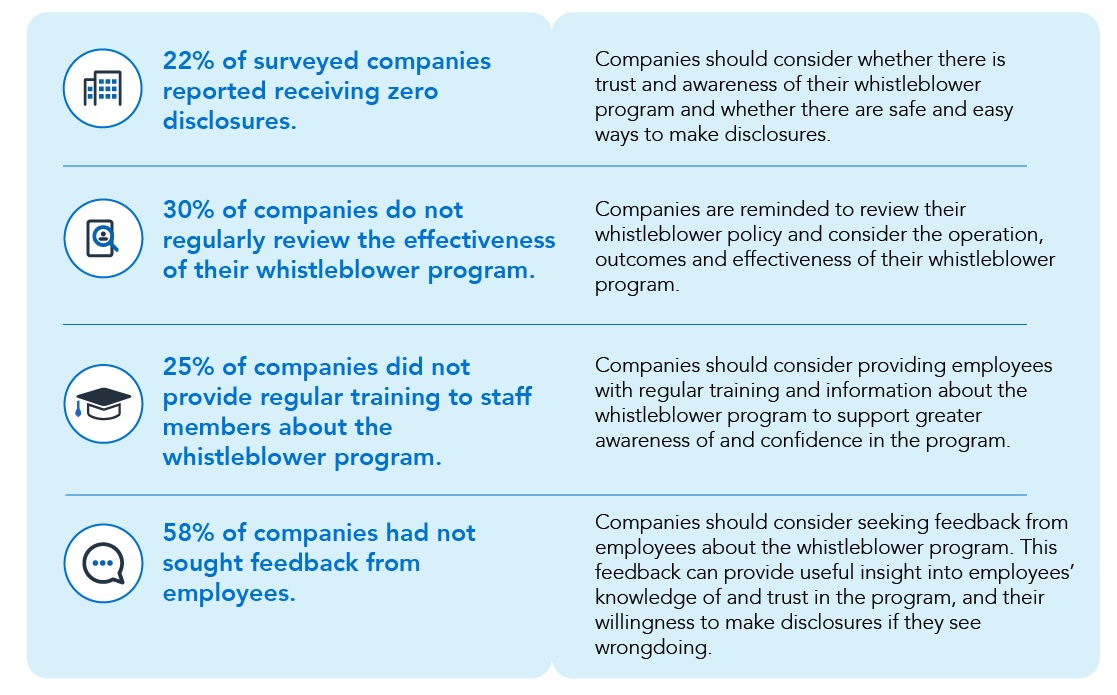Employer Duty Of Care Explained
Understand employer duty of care and how it protects worker safety and wellbeing.

Workplace injuries and accidents are significant concerns for both employees and employers. These incidents not only impact the physical and mental wellbeing of employees but can also lead to substantial legal and financial repercussions for businesses.
Issues such as stress, burnout, and psychological strain are significant concerns that can undermine productivity and employee retention. Despite the clear risks, many employers are still unsure about the extent of their legal responsibilities and how to effectively safeguard their employees.
In our guide, we’ll outline what an employer’s duty of care is and how they can manage these responsibilities effectively.
Key Takeaways for Employers
Employers have a legal and moral obligation to protect the health and safety of their employees. This duty encompasses:
- Legal Requirement to Protect Employees: Upholding legal obligations under workplace health and safety regulations to provide a safe working environment.
- Taking Reasonable Steps for Safety: Implementing reasonable measures to prevent foreseeable risks and protect employees from harm.
- Employee’s Role in Their Own Safety: Acknowledging that employees also have a responsibility to follow safety procedures and report hazards promptly.
Legal Framework Of Employer Responsibilities
Statutory Obligations
In the realm of workplace health and safety, employers in many jurisdictions are bound by comprehensive legislative frameworks designed to ensure the physical and mental wellbeing of their employees. These statutes typically mandate that employers provide a safe working environment, free from hazards that may cause harm or injury.
While traditionally focused on physical safety, recent amendments to these laws increasingly emphasise the importance of mental health protection. As of April 2023, The Work Health and Safety Act 2011 imposes a duty on employers to eliminate or minimise risks to mental health arising from the workplace as far as reasonably practicable.
See our guide on Psychosocial Hazard Legislation By State.
Common Law Duties
Beyond statutory obligations, employers also have common law duties that extend to safeguarding their employees’ mental wellbeing. This duty of care encompasses a broad responsibility to take reasonable steps to prevent foreseeable harm to employees, including psychological harm.
Courts have consistently recognised that employers must consider and address risks to mental health arising from workplace conditions, interactions, and organisational practices.
Employers’ duty of care towards employees’ mental wellbeing is rooted in common law principles that require them to foresee and address risks that could reasonably be expected to cause psychological harm. This duty extends to implementing policies and practices that promote mental health, addressing workplace stressors promptly, and providing support mechanisms for employees experiencing mental health challenges.
Examples:
- Wearne v State of Victoria (2017) VSC 25: In this case, the Victorian Department of Human Services was found liable for failing to address workplace conflict and stressors that led to a case manager developing a psychological injury. The court emphasised the employer’s duty to investigate and manage interpersonal conflicts that pose risks to employees’ mental health.
- Kozarov v State of Victoria [2022] HCA 12: This landmark High Court ruling reaffirmed an employer’s duty to prevent mental injuries, particularly in high-stress environments. The case involved a worker who developed post-traumatic stress disorder due to exposure to trauma-related work, highlighting the employer’s obligation to mitigate risks associated with inherently stressful roles.
Reforms to Workers' Compensation in NSW
New South Wales is implementing significant changes to its workers’ compensation system, particularly concerning psychological injury claims.
The proposed legislation introduces a higher threshold for whole person impairment and faster claims resolution processes for workplace psychological injuries. These reforms aim to address the surge in psychological injury claims and the associated costs.
What is Duty of Care?
The concept of duty of care is foundational in the employer-employee relationship, encapsulating the legal and ethical responsibilities employers have towards their employees. Understanding and fulfilling this duty is crucial for preventing workplace accidents, reducing legal risks, and maintaining employee morale and productivity. Taking responsibility of the overall wellbeing of employees is a crucial factor in reducing the overall costs of mental health in the workplace.
Employer Duty of Care Definition
Duty of care refers to the legal obligation to take reasonable steps to protect others from harm. For employers, this means creating a work environment where risks are minimised, and employees feel safe and supported. This duty extends beyond physical safety to include psychosocial hazards and psychological harm.
What Are Employers’ Responsibilities?
Employers have a duty of care to ensure the health, safety, and welfare of their employees while they are at work. This duty is comprehensive and includes various specific obligations:
Safe Place to Work
Employers must provide a workplace that is free from hazards that could cause injury or harm. This includes maintaining clean and safe facilities, proper lighting, ventilation, and ergonomic workstations.
Competent Staff: Ensuring that staff are adequately trained and competent in their roles is crucial. This involves hiring qualified individuals and providing ongoing training and professional development opportunities.
Proper and Adequate Materials
Employers must provide the necessary tools, equipment, and materials for employees to perform their tasks safely and effectively. This also includes ensuring that equipment is well-maintained and up to date.
Information, Training, and Instruction
Employees should be informed about potential hazards and trained on safe work practices. Clear instructions and guidance should be provided to ensure that employees understand how to perform their duties safely.
Safe System of Work and Supervision
Implementing safe systems of work and providing appropriate supervision are essential. This includes developing standard operating procedures, conducting regular safety audits, and ensuring that supervisors are trained to identify and mitigate risks.
In many cases it can be difficult for small business owners to meet these requirements all by themselves, which is why it can be beneficial to opt for an EAP designed for small businesses.
The Standard of Care
“Reasonable Care”
The standard of care that an employer must adhere to is defined as “reasonable care.” This does not imply that employers need to guarantee the safety of every employee in all circumstances, but rather that they must take sensible and practical measures to prevent foreseeable injuries. Reasonable care involves a proactive approach to identifying potential hazards and implementing measures to mitigate these risks.
What is considered reasonable in one context might not be adequate in another.
Examples:
- Office Environment: In an office, reasonable care might include ensuring ergonomic workstations, maintaining clean and orderly workspaces, and providing regular breaks to prevent repetitive strain injuries.
- Construction Site: On a construction site, reasonable care would involve providing personal protective equipment (PPE), ensuring machinery is properly maintained, conducting regular safety training sessions, and implementing strict site safety protocols.
Employee Responsibility
While employers have a duty of care to their employees, employees also have a role to play in maintaining a safe workplace. This shared responsibility is essential for the overall effectiveness of workplace safety measures.
Acting Prudently
Employees are expected to act prudently, which means they should use common sense and be aware of their surroundings to avoid unnecessary risks. This includes following safety guidelines and being mindful of the hazards associated with their tasks.
Complying with Safety Directions
Employees must also comply with any safety directions provided by their employer. This includes wearing required PPE, attending safety training sessions, adhering to established safety procedures, and reporting any unsafe conditions or incidents to their supervisors. By doing so, employees help create a safer work environment for themselves and their colleagues.
Importance of Risk Assessments
Risk assessments are a critical component of an employer’s duty of care. They serve as a proactive measure to identify and mitigate potential hazards in the workplace before they result in accidents or injuries. Conducting regular risk assessments helps ensure that the work environment remains safe and that any emerging risks are promptly addressed.
Employee Consultation
Employee consultation plays a pivotal role in maintaining a safe and effective workplace environment. It involves actively engaging employees in discussions about workplace safety, hazard identification, risk mitigation, and changes that may impact their wellbeing.
Benefits of Consulting Employees
Consulting employees yields numerous benefits, including:
- Enhanced Hazard Identification: Employees often have firsthand knowledge of workplace hazards, contributing valuable insights for hazard identification processes.
- Improved Risk Mitigation Strategies: Involving employees in developing risk mitigation approaches ensures practical solutions that align with daily work practices.
- Enhanced Safety Culture: Engaged employees who feel their opinions are valued are more likely to adhere to safety protocols and contribute to a positive safety culture.
- Compliance and Legal Protection: Regular consultation helps fulfill legal obligations and demonstrates commitment to employee safety, reducing the risk of legal liabilities.
For employees, the ability to report hazards easily and confidentially is a cornerstone of a strong safety culture. At Foremind, as part of our EAP services, we provide safe, secure and anonymous reporting for any of the psychosocial hazards domains.
Summing Up
Employers have a legal and moral duty of care to protect the health and safety of their employees, encompassing physical and mental wellbeing. This involves upholding legal obligations under workplace health and safety regulations, taking reasonable steps to prevent foreseeable risks, and acknowledging that employees also have a responsibility to follow safety procedures and report hazards.
Employers must provide a safe work environment, competent staff, adequate materials, and proper training. Regular risk assessments and employee consultations are crucial for identifying and mitigating potential hazards.
If you’re unsure about the next steps in ensuring workplace safety, consult with our experienced team to develop tailored strategies that prioritise employee wellbeing and compliance with workplace health and safety regulations.
Related:
- EAP For Construction Businesses
- How Much Do EAPs Cost?
- EAP Counselling
- How To Respond To A Critical Incident
- Benefits of EAPs

Hello 👋 I’m Joel the founder of Foremind.
Are you ready for simplified support & compliance?
Latest insights
Answers to the frequently asked questions.
Still have questions?
Email us at enquiries@foremind.com.au and we'll get back to you quickly with a response
Yes, we have culturally competent counsellors available, including those able to work with first nation and CALD employees.
Onshore on secure AWS Servers in Sydney Australia. All data is encrypted in transit and at rest and our entire team is located in Australia.
Employees can access our platform on any device (mobile, laptop, desktop, etc.) as long you have the website link - no need to download any app on devices. You wouldn’t need to enrol any of your staff individually.- When we do our onboarding, we ask for the first name, last name and email of all your employees, and send out an email invite to all them which will allow them to create their own individual account to access the platform. For new staff we can also invite them or provide you with a unique link to embed in your onboarding process, whichever is more convenient for you. We also kick things off with a launch webinar or video to make sure everyone is aware of Foremind and how to use it. We’ll also provide you with any collateral such as posters, QR codes, brochures etc. to help drive awareness and encourage people to create an account in the platform.
The support line is answered by our reception service 24/7. It is for urgent platform or session-related issues only (e.g. *“My counsellor didn’t show”*) or helping staff create an account.






